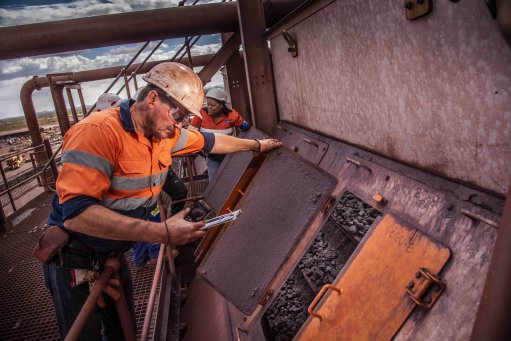
Weba Chute Systems field adviser inspecting a chute
During times of declining commodity prices, the mining industry routinely prioritises cost cutting by suspending capital expenditure, however, the continuation of comprehensive maintenance programmes during times of financial constraint is said to be essential for ensuring the reliability and performance of existing equipment.
Weba Chute Systems emphasises the importance of timely servicing, repairs and refurbishments to prevent failures that could impact operations downstream. The company explains that one of the more complex aspects of mining operations’ maintenance is measuring the wear life of transfer chutes, which involves tracking numerous components.
Weba Chute Systems CEO Mark Baller says that the company's customised reliability model captures key wear indicators for each chute, providing plant operators with insights into wear patterns.
“Such insights are not just academic; they are practical, enabling predictions about which components will need replacement and the optimal timing for such replacements,” Baller explains. “This predictive capability facilitates meticulous planning, such as timely ordering of necessary parts to ensure they are on-site for upcoming maintenance windows. By adopting a proactive approach to maintenance, unforeseen stoppages are minimised, along with the accompanying disruptions and lost production time.”
He emphasises the efficiency gains achieved through accurate predictions of component lifespan within chutes. The company extends the benefits of its reliability tool to all customers, not only those with Weba Chute Systems' maintenance contracts in place.
The application of reliability modelling allows for the generation of monthly reports, detailing the maintenance schedules required for each wear part within every chute. The model can be used to indicate differential wear levels across various parts of the chute, influenced by varying impact levels. This level of detail enables chute owners to prioritise maintenance for areas experiencing the highest wear to help optimise maintenance operations and ensure continuous production.